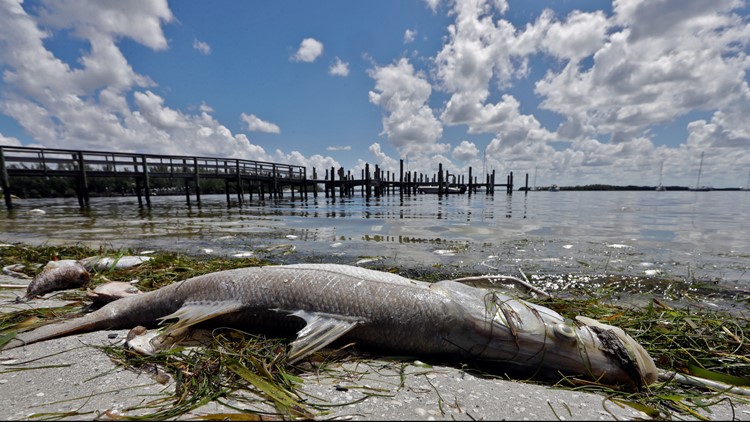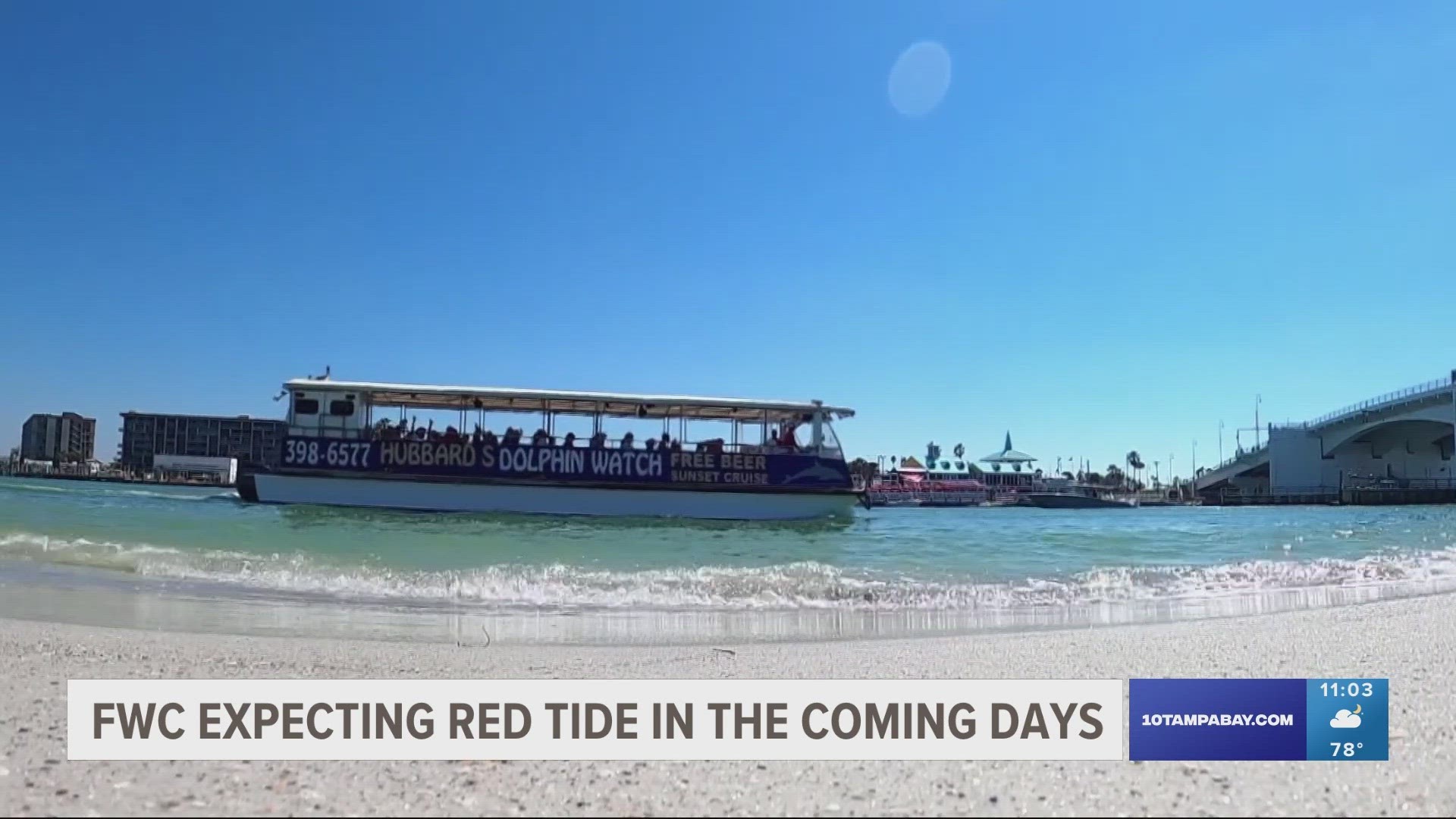MANATEE COUNTY, Fla. — The Tampa Bay area has been experiencing a resurgence of the red tide organism across beaches, and recent findings show the patchy blooms are not slowing down.
At the beginning of September, there were no reports of the red tide organism, Karenia brevis, from the Florida Fish and Wildlife Conservation Commission (FWC). However, recent samples collected showed concentrations in Pinellas, Hillsborough, Manatee and Sarasota counties.
This week, red tide showed background to high concentrations in 24 samples collected in and offshore of Pinellas County, background to low concentrations in four samples collected in Hillsborough County, background to medium concentrations in 24 samples in Manatee County and background to high concentrations in 27 samples collected in Sarasota County.
According to FWC's red tide map, concentrations are most present located offshore and onshore of north Pinellas County beaches, near Clearwater and Madeira Beach.
You can check out the FWC's latest Fishkill reports here.
Red tide is one of the water's deadliest enemies, and it occurs nearly every summer along Florida’s Gulf Coast. Some years, however, it's worse than others.
The blooms can last as little as a few weeks or longer than a year and can even subside and then reoccur, according to FWC.
Local researchers and scientists who are working to find solutions to red tide have said climate change and human activity remain a concern and contributing factor.
They say while red tide occurs naturally, people and communities need to do their part to decrease its intensity.
"Our water temperatures don't go down as they used to before and that might be a problem. But if you've got a pretty clean estuary, a pretty clean Sarasota Bay, you probably wouldn't get as big an event compared to if you've loaded that system with fertilizers and Nitrogen," said Dave Tomasko, Executive Director, Sarasota Bay Estuary Program.



